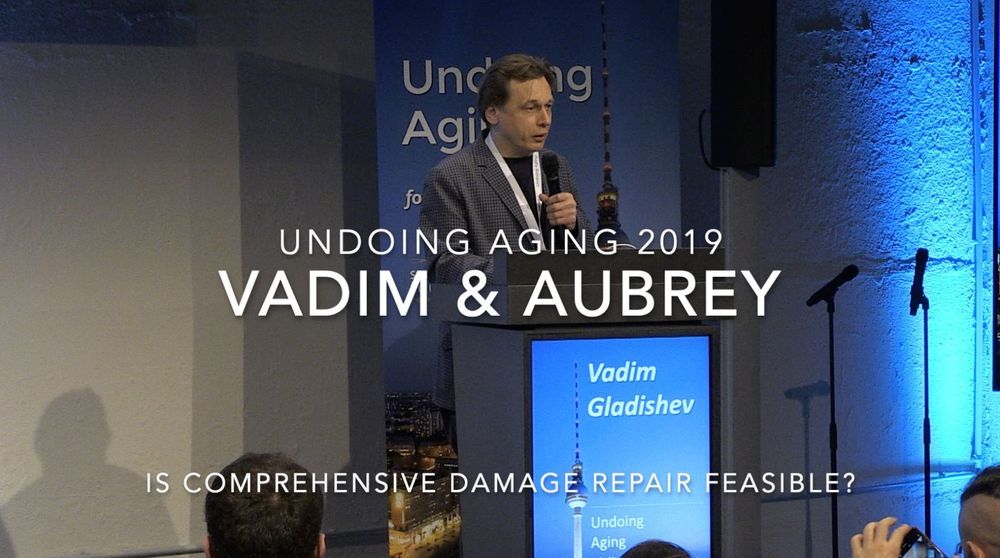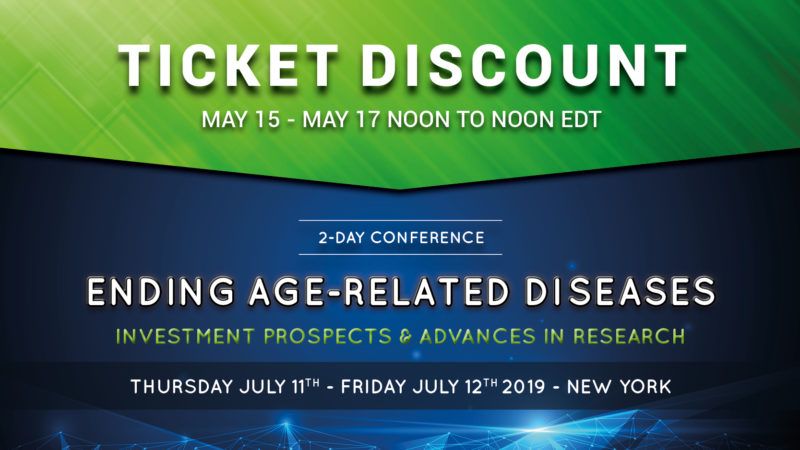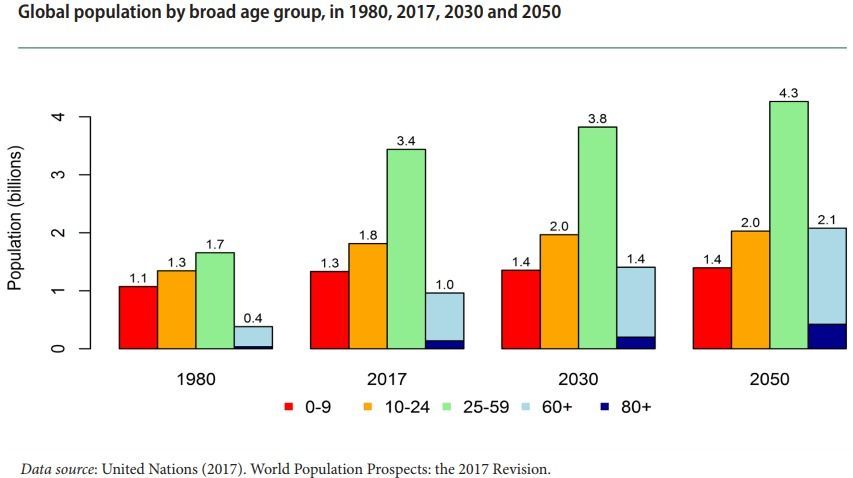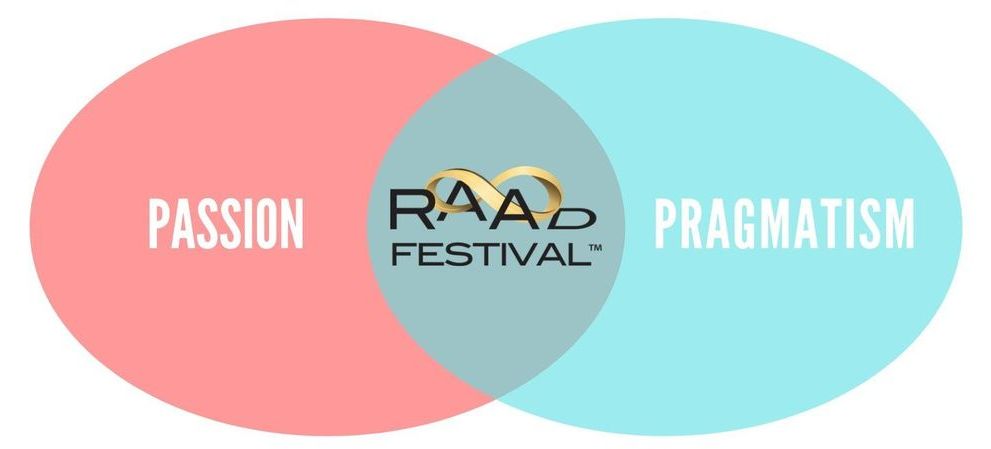An entertaining debate between Vadim Gladyshev — Havard Medical School and Aubrey de Grey — SENS Research Foundation.
undoing-aging.org/…/a-debate-between-vadim-gladyshev-and-au…
____________

An entertaining debate between Vadim Gladyshev — Havard Medical School and Aubrey de Grey — SENS Research Foundation.
undoing-aging.org/…/a-debate-between-vadim-gladyshev-and-au…
____________

These studies show that older adults who frequently pick up a puzzle tended to have the short-term memory capacity of someone eight years their junior and the grammatical reasoning of someone ten years younger.
“We hope this will encourage people to consider how they challenge their brain on a regular basis, and perhaps consider taking up puzzles or evidence-based brain training games as part of a lifestyle approach to keep their brains healthy,” Corbett tells Inverse.
Corbett’s study is one of a few showing that frequent engagement with puzzles has lasting effects on memory and cognitive decline, the slow loss of memory and other problem-solving skills that accompany aging (and is also a feature of brain diseases like Alzheimer’s). Other studies include the Bronx Aging study, which showed that dementia patients who did crossword puzzles started to lose their memory about 2.54 years later than those who didn’t do crosswords.

Nina Khera writes about the aging processes and why she took an interest in aging research and why she thinks young people should too.
Aging is a series of processes in which the body’s ability to perform functions gradually decreases. The Hallmarks of Aging includes such things as an increase in senescent cells and a decrease in stem cells, but decreasing NAD+ and increasing free radicals matter as well. This article will cover a few root causes of aging and their total impact on humanity.
Senescent cells
One root cause of aging is senescent cells. These are aged or damaged cells that normally would initiate the self-destruct sequence known as apoptosis to dispose of themselves, but, for some reason, they evade this process and stay alive in the body.

We’re offering a few discounted tickets to our conference, Ending Age-Related Diseases 2019, in order to celebrate the 174th birthday of Élie Metchnikoff, the father of gerontology. We’re selling these tickets at the previous early bird price of $350 instead of the current $400!
This special, lower-price offer is valid from May 15, Noon EDT to May 17, Noon EDT, so this is the ideal time to guarantee your place at this exciting event. Prices will also be rising to $500 from June 10th onwards as we draw closer to the conference.
You can get your discounted ticket by visiting our Eventbrite page and using the discount code Metchnikoff.

Nicola Bagalà and Michael Nuschke take a look at the future of pensions and how the possible defeat of age-related diseases will affect them.
If you work in social security, it’s possible that your nightmares are full of undying elderly people who keep knocking on your door for pensions that you have no way of paying out. Tossing and turning in your bed, you beg for mercy, explaining that there’s just too many old people who need pensions and not enough young people who could cover for it with their contributions; the money’s just not there to sustain a social security system that, when it was conceived in the mid-1930s, didn’t expect that many people would ever make it into their 80s and 90s. Your oneiric persecutors won’t listen: they gave the country the best years of their lives, and now it’s time for the country to pay them their due.
When you wake up, you’re relieved to realize that there can’t be any such thing as people who have ever-worsening degenerative diseases yet never die from them, but that doesn’t make your problem all that better; you still have quite a few old people, living longer than the pension system had anticipated, to pay pensions to, and the bad news is that in as little as about 30 years, the number of 65+ people worldwide will skyrocket to around 2.1 billion, growing faster than all younger groups put together [1]. Where in the world is your institution going to find the budget?

On senescent cells, mechanism of interaction and (potential?!) side effects of NAD+ supplements. “… Those people self-experimenting with NAD+ precursor supplementation should consider keeping a close eye on markers of inflammation…”
Enhancing levels of NAD+ in mitochondria via delivery of various precursor compounds as supplements is growing in popularity as an approach to boost faltering mitochondrial function and thus modestly slow the progression of aging. A human trial demonstrated improved vascular function as a result of nicotinamide riboside supplementation, for example. Researchers here show that increased NAD+ will likely make worse the inflammatory signaling of senescent cells, however. Senescent cells accumulate with age, and are an important cause of the chronic inflammation of aging that drives the progression of many age-related diseases.
The results here suggest that efficient senolytic treatments to selectively destroy senescent cells should proceed any of the current approaches to raising levels of NAD+ in older individuals — and it is an open question as to whether any of the existing available options are efficient enough to make NAD+ enhancement safe in the longer term. Those people self-experimenting with NAD+ precursor supplementation should consider keeping a close eye on markers of inflammation.


I am writing this shortly after returning from the third edition of RAADfest, a conference created two years ago by a team led by Jim Strole. I go to a lot, I mean a lot, of conferences, not least because outreach is such a big part of my role in our crusade. But I think this is the first time I have chosen to devote an editorial to one. You may wonder what’s so special.
Well, RAADfest is … not your typical conference. Its organizers—Strole and his team, most notably his partner Bernadeane—have, for a couple of decades, led a group in Arizona named “People Unlimited”, which has acquired a reputation—and, I have to report, a well-deserved one—for, let’s say, placing excessive emphasis on the principle that ‘‘where there’s a will there’s a way’’ in relation to the defeat of aging (Yeah, I can still do classic British understatement when I try). Accordingly, when they first let it be known that they planned to do something bigger, the initial reaction was decidedly mixed. I don’t know how many credentialed biogerontologists declined speaking invitations, but only a few of us accepted—and of those, as I recall, only the perennially fearless Michael Rose was a university professor. I myself, though happy to lend my support to this new initiative as a speaker, was rather more diffident in response to Strole’s entreaties to promote the event through my outreach channels.
But the doubters were wrong—very wrong. The event was a storming success, in terms of both attendance—Strole had secured significant sponsorship from the Life Extension Foundation under the expectation of a budgetary shortfall but was actually able to give it back, yes you read that correctly—and also content, which, while being necessarily a little light on science given the paucity of scientist speakers, was coherent, rousing, and informative.
